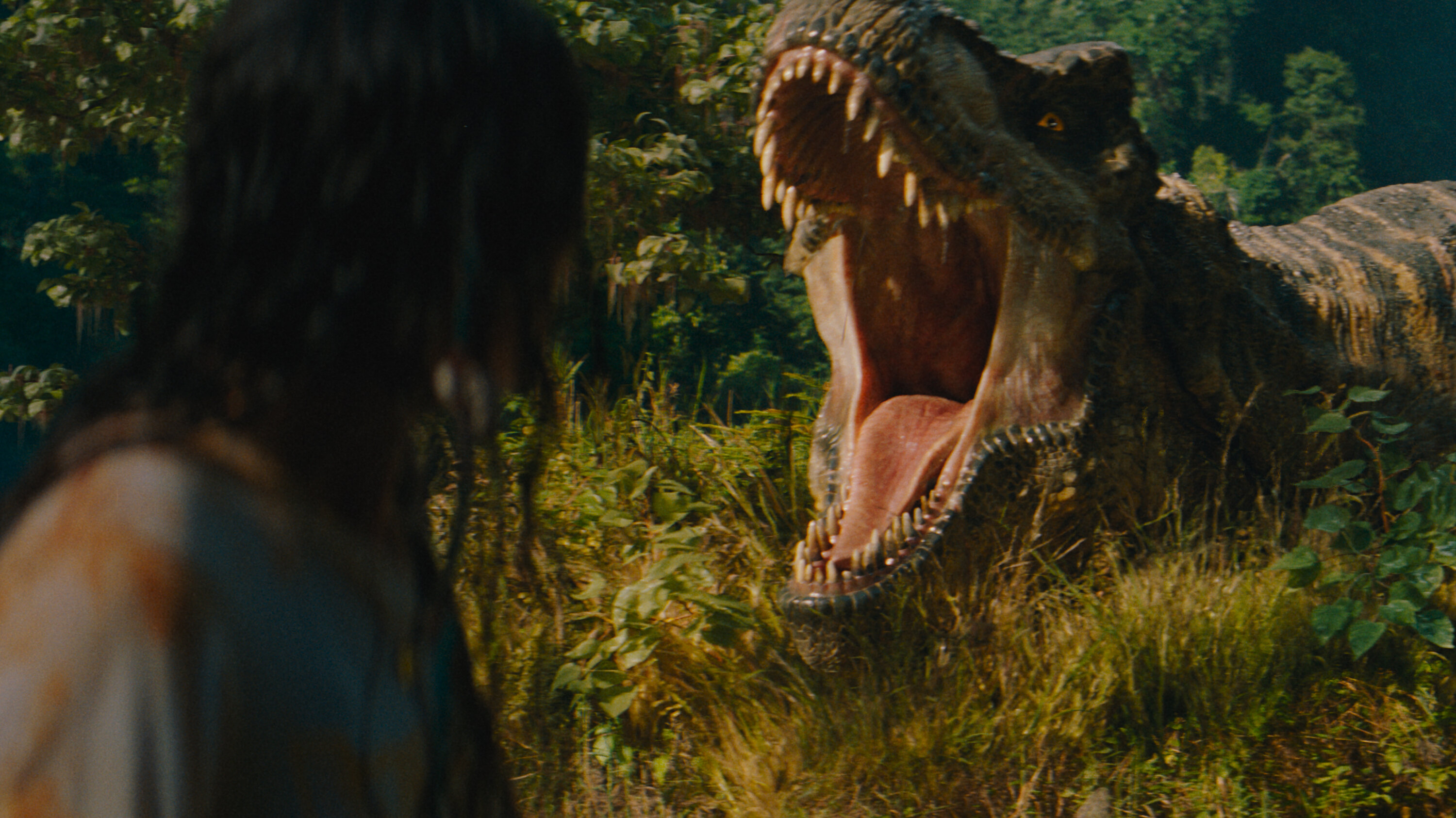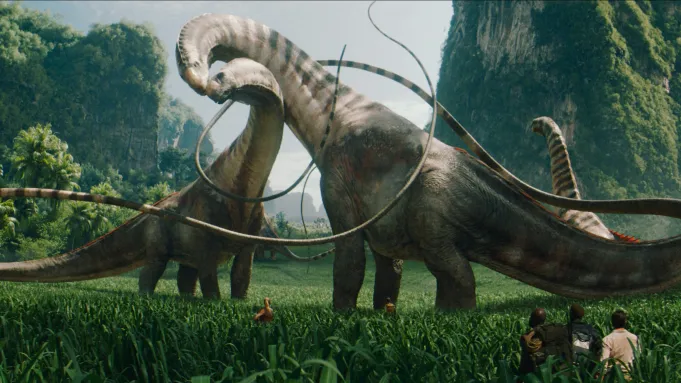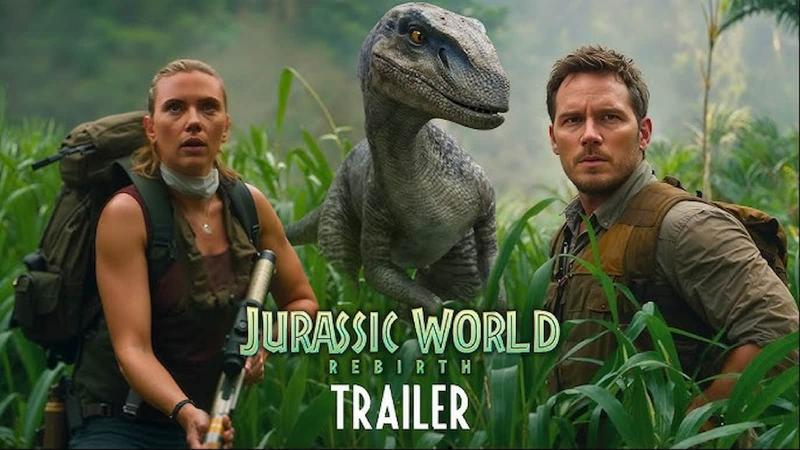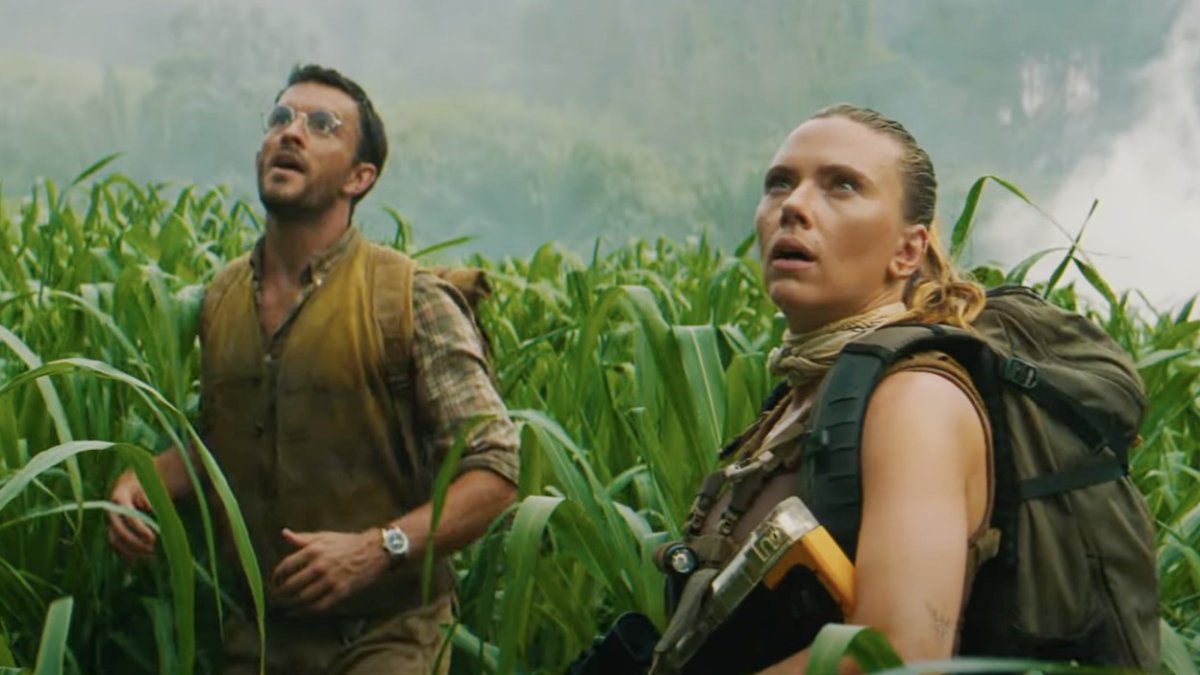After three decades of bringing prehistoric creatures to the big screen, the Jurassic franchise is ready for its next evolution. Jurassic World: Rebirth promises to be more than just another dinosaur movie—it's a complete reinvention that takes the beloved series in an exciting new direction while honoring the legacy that made it a cultural phenomenon.

Released in July 2025, this latest installment doesn't just continue the story—it reshapes it entirely. Under the direction of Gareth Edwards, known for his visually stunning work on "Rogue One: A Star Wars Story," the film introduces us to a world where dinosaurs have found their new home around the equator, creating an entirely different dynamic than we've seen before.
A New Chapter, A New Cast
The most striking change in Jurassic World: Rebirth is its completely fresh cast. Scarlett Johansson steps into the lead role as Zora Bennett, a covert operations expert who's contracted to lead a dangerous mission. This casting choice signals a significant shift from the Chris Pratt and Bryce Dallas Howard era, bringing a different energy and perspective to the franchise.
Meet the New Team: The film features an impressive ensemble cast including two-time Oscar winner Mahershala Ali, rising star Jonathan Bailey, and seasoned actors Rupert Friend, Manuel Garcia-Rulfo, and Ed Skrein. Each brings their own unique skills to what promises to be the most dangerous mission in Jurassic history.
What makes this casting particularly interesting is how it reflects the evolution of action cinema. Johansson's Zora Bennett isn't just another action hero—she's a skilled professional leading a team on a mission that could change everything we know about dinosaur conservation and survival.
The Story That Changes Everything
Set five years after the events of "Jurassic World Dominion," Rebirth presents a world where dinosaurs have adapted to their new reality. The most fascinating aspect of the story is how it addresses the practical question that many fans have wondered about: where do dinosaurs actually live now?
The answer is both logical and cinematically brilliant. The world's dinosaurs have migrated to equatorial regions, which provide the last viable climate for their survival. This isn't just a plot convenience—it's a scientifically grounded approach that adds realism to the fantastical premise.
The Mission That Drives the Plot
Zora Bennett's mission is deceptively simple: secure genetic material from the world's three most massive dinosaurs across land, sea, and air. But as anyone familiar with the Jurassic franchise knows, simple missions have a way of becoming extraordinarily complicated when prehistoric creatures are involved.

The mission takes the team to a former island research facility—a location that immediately evokes memories of the original Jurassic Park. But this isn't just nostalgia for nostalgia's sake. The island setting serves a crucial narrative purpose, creating an isolated environment where the team must confront not only the dinosaurs but also "a sinister, shocking discovery that's been hidden from the world for decades."
Gareth Edwards: The Perfect Director for a Franchise Rebirth
Choosing Gareth Edwards to direct Jurassic World: Rebirth was a masterstroke. Edwards has proven himself capable of handling large-scale spectacle while maintaining intimate character moments. His work on "Rogue One" demonstrated his ability to balance action, character development, and visual storytelling in ways that serve both newcomers and longtime fans.
Edwards faced an incredible challenge with this project. From his hiring in early 2024 to the July 2025 release date, he had little more than a year to prep, shoot, and complete post-production. This breakneck schedule would be daunting for any filmmaker, but Edwards has shown he can deliver under pressure.
A Fresh Visual Approach
One of the most exciting aspects of Edwards' involvement is his approach to visual storytelling. Known for creating stunning, immersive worlds, he brings a fresh perspective to the familiar Jurassic aesthetic. Early reports suggest that he's finding new ways to showcase the majesty and terror of dinosaurs while maintaining the practical effects philosophy that has always been central to the franchise.

What Makes Rebirth Different
While Jurassic World: Rebirth is part of the larger franchise, it's designed to stand on its own. This approach is smart for several reasons. First, it allows newcomers to jump in without feeling lost. Second, it gives the filmmakers freedom to explore new themes and ideas without being constrained by previous storylines.
The Science Behind the Spectacle
The film's premise—that dinosaurs have found refuge in equatorial regions—reflects a thoughtful approach to the scientific aspects of the story. Rather than ignoring the practical challenges of dinosaur survival in the modern world, the movie addresses them head-on. This attention to detail elevates the material beyond simple monster movie territory.
The genetic material mission also opens up fascinating possibilities for exploring themes of conservation, genetic engineering, and humanity's relationship with nature. These aren't just background elements—they're central to understanding what makes this iteration of the franchise unique.
The Return to Practical Effects
One of the most encouraging aspects of Jurassic World: Rebirth is its commitment to practical effects. While CGI will certainly play a role, the film emphasizes the tactile, physical elements that made the original Jurassic Park so compelling. This isn't just about nostalgia—practical effects create a sense of reality that pure CGI often struggles to achieve.
Behind the Scenes: By March 2025, Edwards was working seven days a week with Industrial Light & Magic and editor Jabez Olssen to ensure the project met its release deadline. This intense schedule reflects the ambition and scope of the project.
What This Means for the Future
Jurassic World: Rebirth represents more than just another sequel—it's a statement about the franchise's future. By starting fresh with new characters and a new approach while maintaining the core elements that make Jurassic special, the film creates possibilities for entirely new storylines and directions.
The success of this approach could influence how other long-running franchises handle their evolution. Rather than being trapped by previous installments, Rebirth shows how a franchise can honor its past while embracing its future.
A New Generation of Dinosaur Movies
For audiences, Jurassic World: Rebirth offers the best of both worlds: the wonder and excitement of seeing dinosaurs on the big screen, combined with fresh perspectives and contemporary filmmaking techniques. It's a movie that can satisfy longtime fans while introducing new generations to the magic of the Jurassic world.

The Bigger Picture
Beyond the spectacle and action, Jurassic World: Rebirth arrives at a time when conversations about extinction, conservation, and humanity's impact on the natural world are more relevant than ever. The film's premise—dinosaurs adapting to survive in a changing world—resonates with contemporary environmental concerns in ways that feel both timely and timeless.
This thematic depth is what separates truly great franchise films from mere cash grabs. Rebirth appears to understand that audiences want more than just dinosaur action—they want stories that matter, characters they care about, and themes that resonate beyond the theater experience.
Ready for the Next Chapter?
Jurassic World: Rebirth releases in theaters July 2, 2025. Whether you're a longtime fan of the franchise or someone looking for your next great adventure movie, this promises to be an experience that reminds us why dinosaurs continue to capture our imagination after all these years.
The Jurassic franchise has always been about more than just dinosaurs—it's about wonder, survival, and the complex relationship between humanity and nature. With Rebirth, it seems we're about to discover what that relationship looks like in an entirely new context. The question isn't whether life will find a way—it's what kind of life we'll discover when it does.
